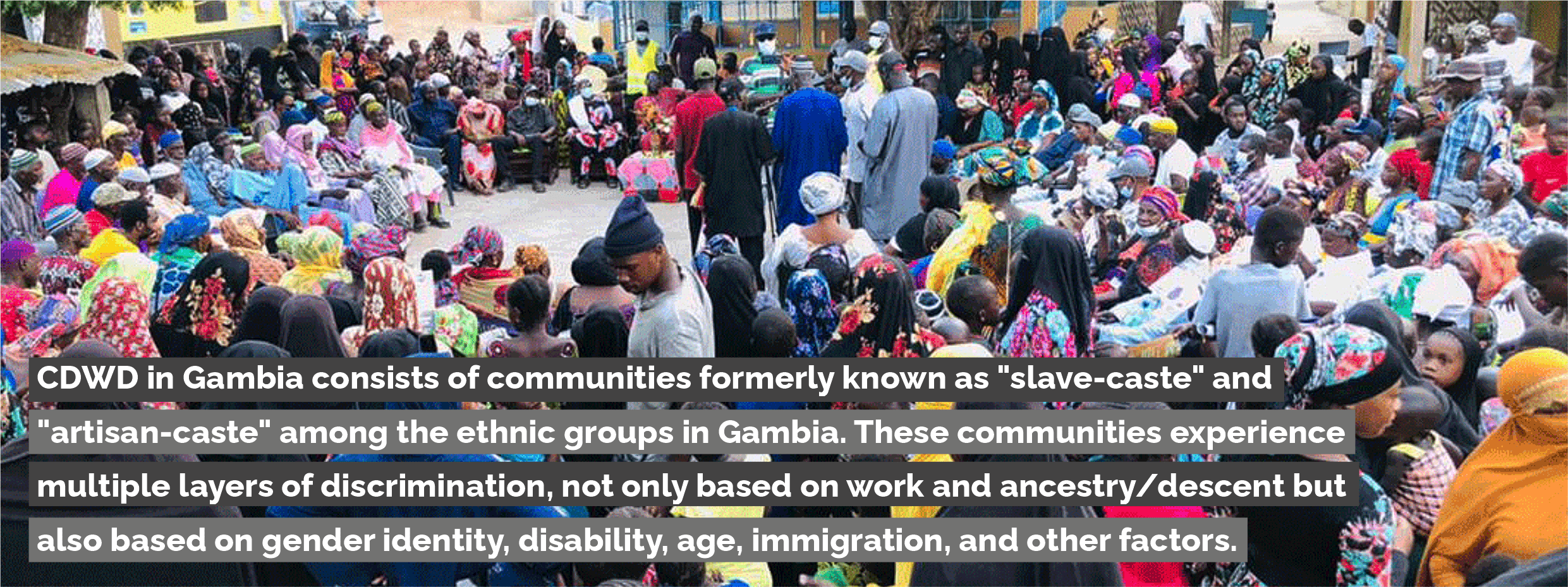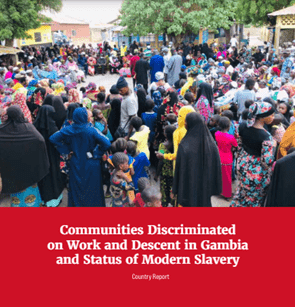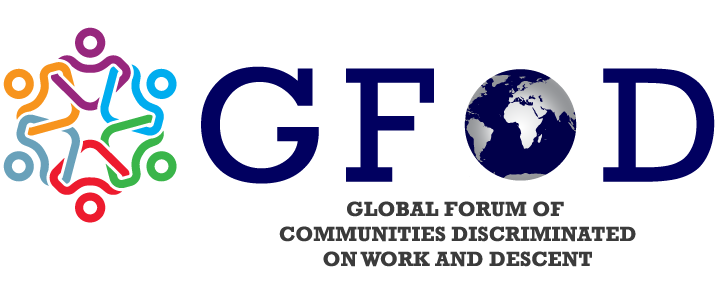
REPORTS

2023AfricaAFRICACasteCATCDWD on groundCommunities Discriminated on Work and DescentGambiaHaratinLatestNewsStories
81st Ordinary Session of the ACHPR: Public Statement by Alima Taal
At the 81st Ordinary Session of the African Commission on Human and Peoples' Rights (ACHPR) in Banjul, The Gambia, GFoD ...

AfricaAFRICAAfricaCasteCDWD on groundCommunities Discriminated on Work and DescentDecemberfeatured-postGambiaLatestLatin AmericaModern SlaveryNewsRegionalStories
Fight against caste-based discrimination in The Gambia: A tale of repression of and resistance by the Communities Discriminated on Work and Descent
In the long-standing resistance against a socially stratified society in the West Africa region, and particularly in the Upper River ...

AFRICAAfricaCasteCATCommunities Discriminated on Work and Descentfeatured reportGambiaModern Slavery
Communities Discriminated on Work and Descent in Gambia and Status of Modern Slavery
The report highlights communities discriminated on work and decent, persistence of slavery and discrimination, prohibitions and restrictions on the CDWD, ...
GAMBIA
THROUGH
CDWD LENSE
REPORT
DATA
INFOGRAPHIC
DISCUSSIONS
RECENT ACTIVITIES
NEWSLETTER
SUBMISSIONS
EVENTS
Discrimination based on Work and Descent, is deeply rooted in Gambia’s history and social fabric and persists in contemporary times despite its abolition in 1906 under the British Empire, and criminalisaton after Gambia’s Independence in 1965. Traditional forms of descent-based slavery in Gambia though ceased now, has left in its wake persistent discrimination and exclusion of the affected communities. Their resultant marginalisation is proving to be a key driver for modern forms of slavery and slavery-like practices among these communities in Gambia.
Indigenous slavery existed in Gambia, as it did in Sub-Saharan Africa, much before the European colonisation and emergence of the trans-Atlantic slave trade. The ethnic groups of Gambia have a long history of keeping indentured domestic slaves and captured war slaves.
The basis of the caste division in Gambia is unclear, or even the use of the term ‘caste’, to describe the social hierarchy. The word is said to have been introduced by the European colonialists. Each of the ethnic groups is influenced by the traditional hierarchical caste structure. The hierarchy is based on the caste-like division of labor, and the order of hierarchy resembles the past political power and authority in society.
Recommendations
Indigenous slavery existed in Gambia, as it did in Sub-Saharan Africa, much before the European colonisation and emergence of the trans-Atlantic slave trade. The ethnic groups of Gambia have a long history of keeping indentured domestic slaves and captured war slaves.
The basis of the caste division in Gambia is unclear, or even the use of the term ‘caste’, to describe the social hierarchy. The word is said to have been introduced by the European colonialists. Each of the ethnic groups is influenced by the traditional hierarchical caste structure. The hierarchy is based on the caste-like division of labor, and the order of hierarchy resembles the past political power and authority in society.
Recommendations
- Enact laws protecting and promoting the rights of Communities Discriminated on Work and Descent (CDWD).
- Initiate mass awareness programs on slavery and its impact, including Human Rights Education for school children and beyond to address stereotypes and discrimination.
- Design social welfare programs prioritizing the advancement of the Communities Discriminated on Work and Descent (CDWD).
- Courtesy Rights Expert Mali and Country Report on Status of CDWD in Gambia


